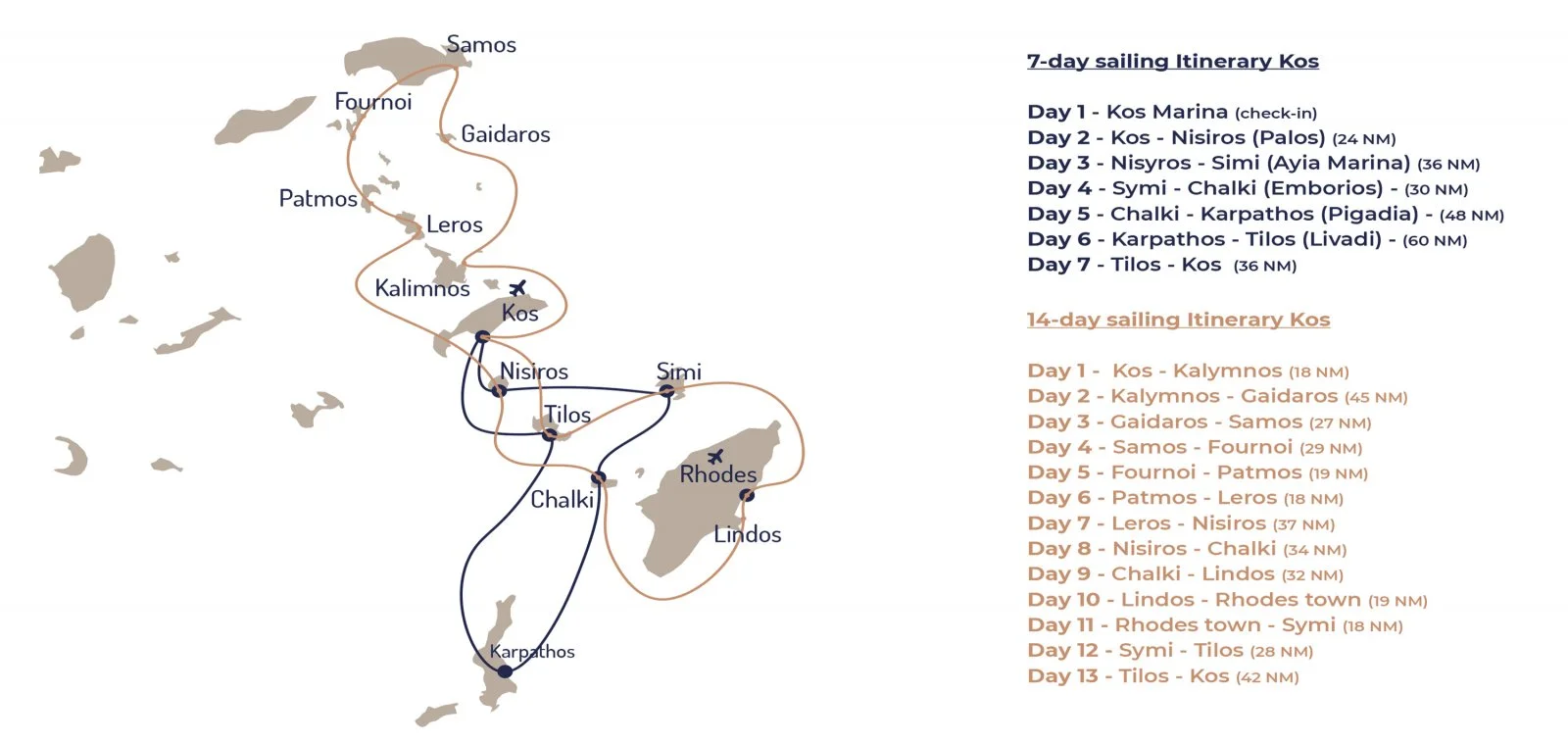A complete yacht charter guide that has everything you need to know about sailing holidays in Kos.
If you love the idea of having your next sailing holidays in Greece, and especially the island of Kos, this is what you need to get prepared before your boat trip.
Ready to rent a boat? Check our boat rentals in Kos
Let's dive right in!
Kos is one of Greece's Dodecanese islands, and her name derives from the daughter of the mythical King Meropas, called Koos. Kos is also the birthplace of Hippocrates, who is considered "the father of medicine".
With a yacht charter in Kos, you can explore the Southeast Aegean, just off the coast of Turkey.
Some of the highlights include the islands of Symi, Tilos, and Rhodes, and the islands' sandy beaches, turquoise waters, ancient and medieval monuments as well as Venetian architecture are sure to impress even the most demanding of travelers.
Kos is a must-see Greek island thanks to its rich culture and history, and the itinerary when starting from Kos is equally rewarding.
It is ideal for charterers looking for consistent, strong winds and long passages between unspoiled islands and islets. Other than the famous Kos and Rhodes, you can also visit picturesque Symi, Niseros and her volcano, as well as Tilos.
North of Kos, you will find small fishing villages and quiet harbors; the Dodecanese are undoubtedly the Greek destination which has escaped tourism the most, and is home to some lesser-known Greek islands!
Kos is ideal for:
Want to visit Turkey, too?
Check our listings for boat rentals in Turkey's Aegean!
When sailing from Kos you can expect consistent NE winds averaging 4-6 Beaufort, which will allow you to enjoy exhilarating sailing from midday and until late afternoon.
If you are sailing in the Dodecanese in July and August, be aware that the prevailing "Meltemi" can bring stronger winds Force 5-7.
You will need to fly in and out of the International airport of Kos, towards which you should be able to find Saturday Easyjet flights from the UK.
We can, of course, organise and book your airport transfers for you in advance, and the transfer time from Kos airport to the marina is approximately 25 minutes.
Liked what you read about Kos so far?
Check also our Rhodes sailing guide!

⚓ Day 1. Kos Marina (check-in)
⚓ Day 2. Kos - Nisyros (Palos) 24 NM
⚓ Day 3. Nisyros - Simi (Ayia Marina) 36 NM
⚓ Day 4. Symi - Chalki (Emborios) - 30 NM
⚓ Day 5. Chalki - Karpathos (Pigadia) - 48 NM
⚓ Day 6. Karpathos - Tilos (Livadi) - 60 NM
⚓ Day 7. Tilos - Kos 36 NM
⚓ Day 1. Kos - Kalymnos (18 NM)
⚓ Day 2. Kalymnos - Gaidaros (45 NM)
⚓ Day 3. Gaidaros - Samos (27 NM)
⚓ Day 4. Samos - Fournoi (29 NM)
⚓ Day 5. Fournoi - Patmos (19 NM)
⚓ Day 6. Patmos - Leros (18 NM)
⚓ Day 7. Leros - Nisiros (37 NM)
⚓ Day 8. Nisiros - Khalki (34 NM)
⚓ Day 9. Khalki - Lindos (32 NM)
⚓ Day 10. Lindos - Rhodes town (19 NM)
⚓ Day 11. Rhodes town - Symi (18 NM)
⚓ Day 12. Symi - Tilos (28 NM)
⚓ Day 13. Tilos - Kos (42 NM)
Keep on reading: First time sailing Guide [11 Must-Have Tips for Beginners]
Sailing holidays in Corfu
Sailing holidays in Lefkas
Sailing holidays in Saronic Islands around Athens
Sailing holidays in Rhodes
Sailing holidays in Sporades